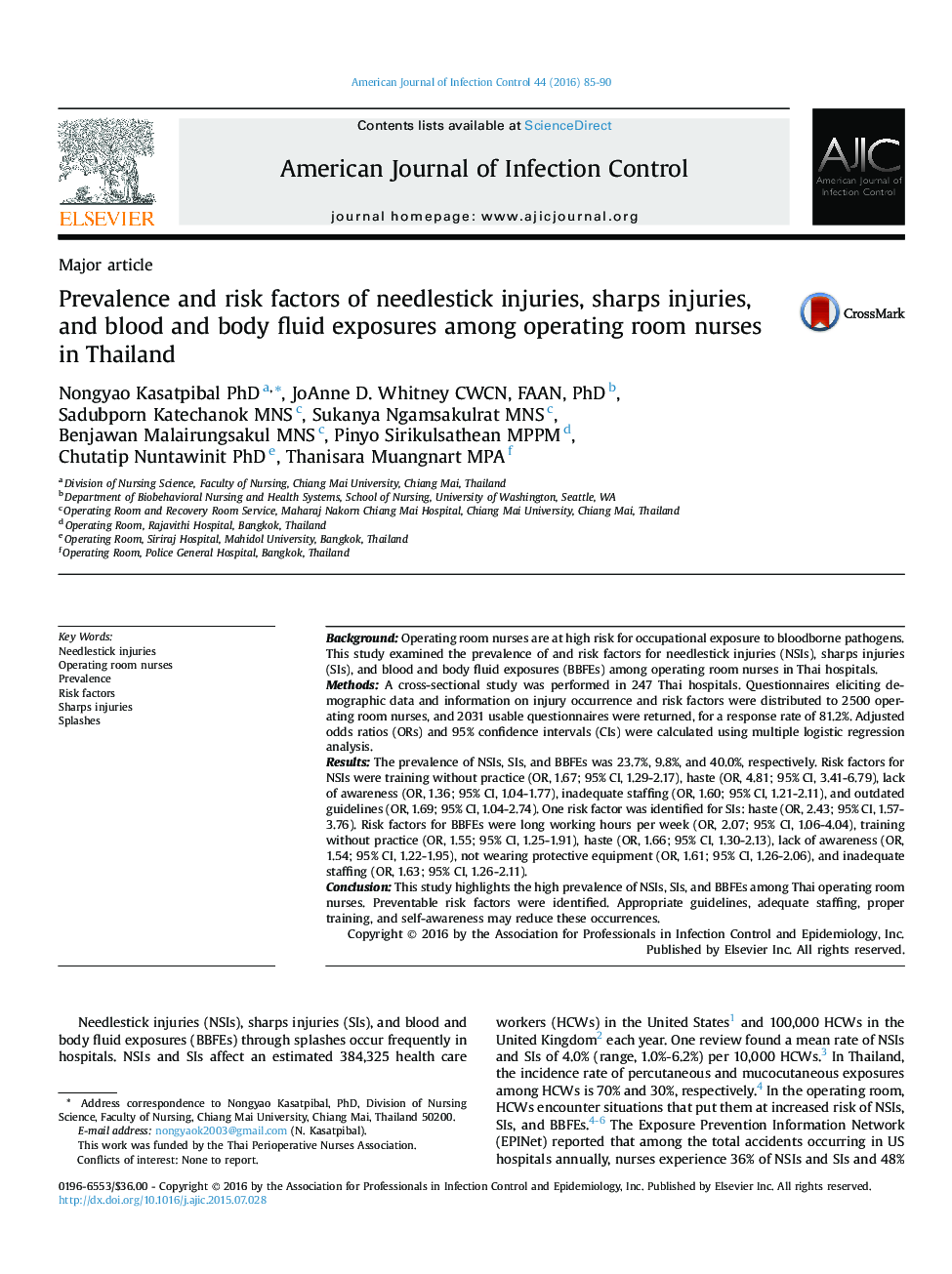| Article ID | Journal | Published Year | Pages | File Type |
|---|---|---|---|---|
| 2638252 | American Journal of Infection Control | 2016 | 6 Pages |
•There is a high prevalence of blood-borne pathogen exposure among Thai operating room nurses.•Training without practice in protective behaviors seems to be a novel risk factor.•Ensuring that proper training methods include practice and demonstration is a priority.•Policy management should be emphasized to reduce these occupational accidents.•Personal accountability should be encouraged to reduce the occupational risks.
BackgroundOperating room nurses are at high risk for occupational exposure to bloodborne pathogens. This study examined the prevalence of and risk factors for needlestick injuries (NSIs), sharps injuries (SIs), and blood and body fluid exposures (BBFEs) among operating room nurses in Thai hospitals.MethodsA cross-sectional study was performed in 247 Thai hospitals. Questionnaires eliciting demographic data and information on injury occurrence and risk factors were distributed to 2500 operating room nurses, and 2031 usable questionnaires were returned, for a response rate of 81.2%. Adjusted odds ratios (ORs) and 95% confidence intervals (CIs) were calculated using multiple logistic regression analysis.ResultsThe prevalence of NSIs, SIs, and BBFEs was 23.7%, 9.8%, and 40.0%, respectively. Risk factors for NSIs were training without practice (OR, 1.67; 95% CI, 1.29-2.17), haste (OR, 4.81; 95% CI, 3.41-6.79), lack of awareness (OR, 1.36; 95% CI, 1.04-1.77), inadequate staffing (OR, 1.60; 95% CI, 1.21-2.11), and outdated guidelines (OR, 1.69; 95% CI, 1.04-2.74). One risk factor was identified for SIs: haste (OR, 2.43; 95% CI, 1.57-3.76). Risk factors for BBFEs were long working hours per week (OR, 2.07; 95% CI, 1.06-4.04), training without practice (OR, 1.55; 95% CI, 1.25-1.91), haste (OR, 1.66; 95% CI, 1.30-2.13), lack of awareness (OR, 1.54; 95% CI, 1.22-1.95), not wearing protective equipment (OR, 1.61; 95% CI, 1.26-2.06), and inadequate staffing (OR, 1.63; 95% CI, 1.26-2.11).ConclusionThis study highlights the high prevalence of NSIs, SIs, and BBFEs among Thai operating room nurses. Preventable risk factors were identified. Appropriate guidelines, adequate staffing, proper training, and self-awareness may reduce these occurrences.
